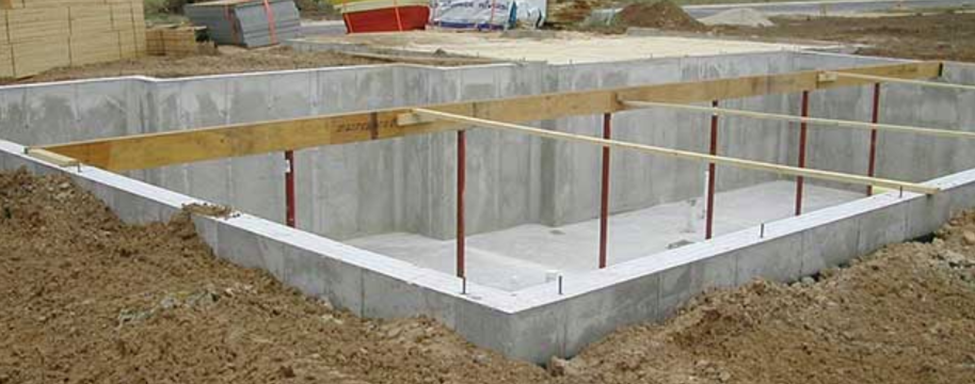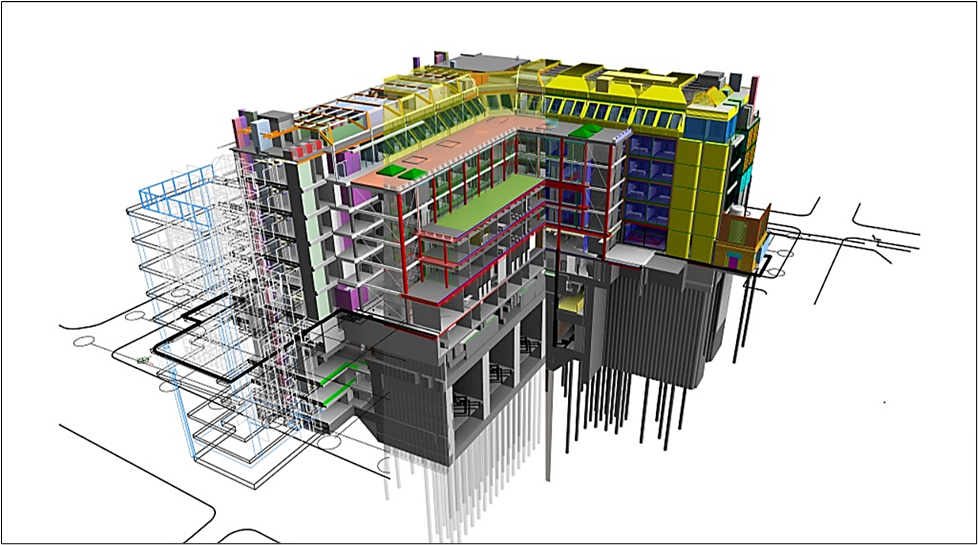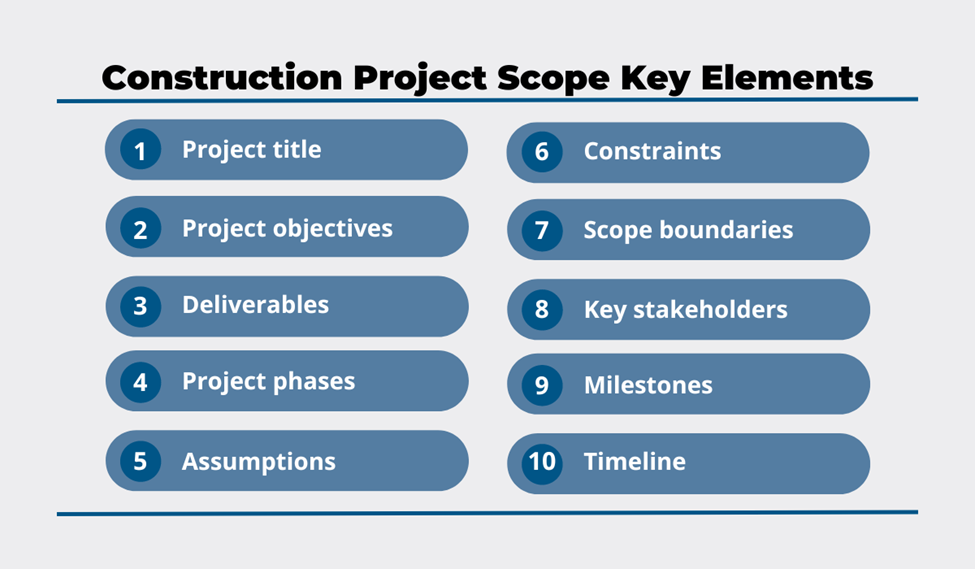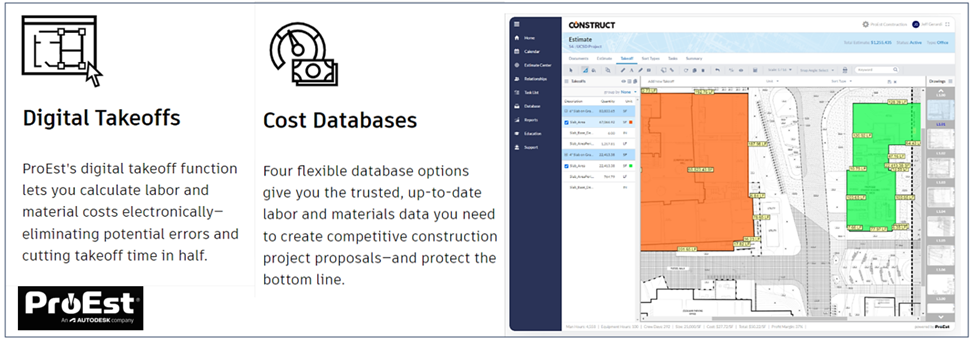Accurately estimating how much a construction project will cost is an intricate art.
The cost planning process commences during project initiation and feasibility studies, continues through the development of the detailed project design and preparation of bidding documentation, and extends throughout the project lifecycle.
In this article, we’ll explore the advantages and disadvantages (or rather potential challenges) of construction cost planning.
Join us on this journey to enhance your understanding of the strategic nuances that shape this crucial process.
In this article...
Cost Planning Advantages
When early construction cost planning is concerned, precision is paramount at all stages of this process.
The project owner/developer and their team who meticulously navigate the intricacies of estimating, allocating, and managing project expenses can expect to reap many benefits.
These include more precise cost estimates, easier budgeting, more efficient resource allocation, minimized risks, and fewer project changes going forward.
So, let’s explore examples of the three key advantages that a well-structured cost-planning approach can generate to lay the foundation for successful construction project planning, execution, and completion.
More Accurate Estimates
When project costs are considered from the earliest stages of project initiation, this empowers the project owner’s team, particularly the estimator(s), to generate a more accurate preliminary cost estimate.
To illustrate, let’s consider a scenario where a developer wants to construct a commercial building on a particular plot of land they already own.

Consequently, the developer’s team begins to gather information about the project requirements, site conditions, and initial design concepts.
Now, let’s assume that the team fails to account for site-specific challenges, such as terrain configuration and soil composition.
In such a case, the estimator would likely not include the additional costs related to addressing these challenges in their preliminary estimate.
Naturally, this would make their cost estimate less precise since the expenses for foundation excavation and pouring would be calculated without considering extra requirements caused by the challenging site conditions.

Other site-specific factors that could throw off the initial estimate include environmental protection considerations and local regulations, both of which can be complex and may not be immediately apparent.
Conversely, let’s say that the developer’s team conducted a comprehensive site analysis and ensured they have (or hired someone who has) sufficient expertise in assessing specific site challenges.
Then, the estimator could account for those costs, making their preliminary estimate more accurate.
This simple example effectively highlights how early-stage cost considerations of various project development factors can enhance the precision of estimates and prevent cost surprises later in the project.
More Balanced Expenses
By considering costs from the project initiation, stakeholders can strategically allocate resources and make informed decisions, ensuring that funds are not overspent in one area at the expense of another.
For instance, let’s consider a company that wants to renovate its existing office space to accommodate a growing workforce, and the company management has set a specific budget limit to do so.
The project team sets out to assess the current condition of the building, identify necessary upgrades, and estimate costs for each phase of the office space renovation.

During this process, they discover that the HVAC system needs a major overhaul.
Armed with this knowledge, the team can research the market to estimate the cost of installing a new, energy-efficient HVAC solution.
Then, they can allocate a portion of the project budget specifically for this critical component, preventing budgetary strain later on.
Now, the team can consider the other office space requirements, such as IT infrastructure, furniture, and interior design, preferably according to their order of priority.
This allows them to allocate the remaining budget efficiently, ensuring that each aspect receives the necessary financial support while staying within the set budget limits.
To do so, they can make cost-effective design choices and material selections.
For example, if certain materials are identified as costly early in the planning phase, alternatives that maintain quality while reducing expenses can be explored.
Again, this single example illustrates how early cost planning allows for a careful allocation of funds to prevent overspending in one area at the expense of another.
Less Changes Made
In essence, all early project planning actions lead to more precise cost estimates, thus minimizing the need for subsequent project changes due to budgetary constraints or unforeseen issues.
For instance, a thorough construction site analysis we mentioned would enable the project development team to:
- identify potential challenges, such as unstable soil conditions,
- determine the need for additional structural support, and
- estimate the related costs more accurately.
Likewise, by performing a regulatory compliance check, the team could identify what expenses will be involved in ensuring that the project aligns with local building codes, zoning regulations, and environmental protection requirements.
These findings would then be incorporated into a collaborative design process, where architects, engineers, and contractors work closely to integrate the identified considerations into the project design.
In the design phase, the project team could utilize advanced technologies, such as building information modeling (BIM) and simulation tools, to visualize and analyze the project in a virtual environment.

This would allow the team to identify clashes, conflicts, or inefficiencies in the design or construction process before actual implementation, reducing the likelihood of changes during the construction phase.
Furthermore, through a systematic identification of potential risks across various project aspects, the team can calculate the necessary funds for contingencies.
By strategically allocating reserves to address unforeseen challenges, the team ensures that the project budget won’t have to undergo significant changes due to unexpected issues.
To recap, the early project planning actions we described help reduce design and budget changes, fostering a more controlled and predictable project trajectory.
In conclusion, the benefits of early cost planning are evident throughout the project development process and continue throughout the project lifecycle.
Cost Planning Disadvantages
While the above advantages help you lay a robust foundation for project success, it’s crucial to navigate through the cost-planning complexities that might arise.
For this reason, let’s explore what challenges you could encounter during the cost-planning process and how you can efficiently address them.
More Preparation
Unsurprisingly, more detailed cost planning requires more preparation in the early stage of project initiation, design, and construction phase planning.
For instance, during the initiation phase, the project team would need to define the project scope in more detail.
More specifically, the project owner should define their vision in as much detail as possible to provide their team with a thorough understanding of project requirements, objectives, and deliverables.
To illustrate, here’s what a well-defined construction project scope should cover:

These project scope elements lay the groundwork for precise cost estimates, efficient resource allocation, and effective risk management throughout the construction project lifecycle.
They also serve as guidelines for the design phase, where designers, engineers, and contractors (already hired or acting as consultants) collaborate to create the project design.
For effective cost planning, this stage may involve more detailed elaboration of specific design details to refine initial cost estimates.
For example, in a commercial building project, the design team might delve into intricate aspects such as the choice of materials for the façade, flooring, and roofing.
By specifying the exact materials, finishes, and construction techniques, the team can provide a more accurate assessment of costs associated with material procurement, installation, and future maintenance.
When planning the construction phase, the team can use the defined project scope elements and the detailed project design to create a robust and strategic construction plan.
Overall, the more effort you invest in detailing the project scope, design, and construction plan, the easier it will be to accurately estimate costs, anticipate challenges, and maintain project timelines.
Naturally, such preparations may require more time and involve some additional costs.
However, these factors are easily offset through the long-term benefits of thorough preparation, namely by preventing costly mistakes during project execution.
More Knowledge Needed
Detailed cost planning usually requires a higher level of expertise, potentially limiting this process to those with specialized knowledge.
For instance, a complex infrastructure project may demand structural engineering, material science, and project management expertise.
The specialized knowledge needed to navigate these complexities may limit the ability for effective cost-planning to professionals with specific technical backgrounds, potentially excluding others less versed in these disciplines.
However, innovative solutions and user-friendly tools have emerged to bridge this knowledge gap.
By leveraging technology, such as advanced takeoff and estimating software, the process of construction cost planning can be simplified and made more accessible to construction professionals with diverse backgrounds.
Here’s an example of one such tool, ProEst.

As you can see, this software enables project developers and bidding contractors to perform material takeoffs digitally (instead of manually), thus minimizing measurement errors and significantly reducing the time required to do so.
Moreover, they can then use ProEst’s cost databases to estimate material and labor costs for any project more accurately.
Additionally, if the contractor with the best bid uses equipment tracking and management software like our GoCodes Asset Tracking, they can easily determine the availability and calculate operational costs for equipment and tools needed for the project.
Therefore, any gaps in cost-planning knowledge can be addressed by leveraging appropriate, easy-to-use, and cost-efficient software tools.
Ultimately, such tools can guide users through the intricacies of cost planning, making accurate estimates and strategic resource allocation more accessible to a wider range of professionals.
Work Limitations
Lastly, strict cost planning can be a double-edged sword, fostering financial discipline while imposing limitations on project execution.
Creativity and flexibility, often crucial in construction projects, may face constraints within predetermined budgetary confines.
For example, in the project’s construction phase, unforeseen implementation challenges or cost-saving opportunities may arise, requiring adjustments.
To illustrate, consider potential issues and improvement prospects in this sample flowchart for a residential construction project.

If any problems or opportunities arise while performing these construction tasks, the inflexibility of strict cost planning might leave little room for adaptation.
This rigidity can impact the project schedule and hinder the ability to seize opportunities for improvements during construction.
Given these limitations, it becomes imperative to strike a balance between fiscal responsibility and the need for flexible project execution.
Therefore, effective cost planning should not only establish financial boundaries but also allow for adaptability when facing uncertainties inherent in construction projects.
By finding this equilibrium, project stakeholders can optimize both financial control and project outcomes, ensuring that cost planning serves as a guiding principle rather than a rigid constraint.
Conclusion
We’ll conclude by saying that construction cost planning stands as a cornerstone for successful project development, which then also provides benefits during the entire project lifecycle.
While it may require more meticulous preparation and technical knowledge or even pose some work limitations during project execution, these challenges can be efficiently addressed by adopting user-friendly tools and technologies.
By embracing these advancements, project stakeholders can navigate the complexities of cost planning, optimizing both financial control and project outcomes for a more robust and efficient construction process.









